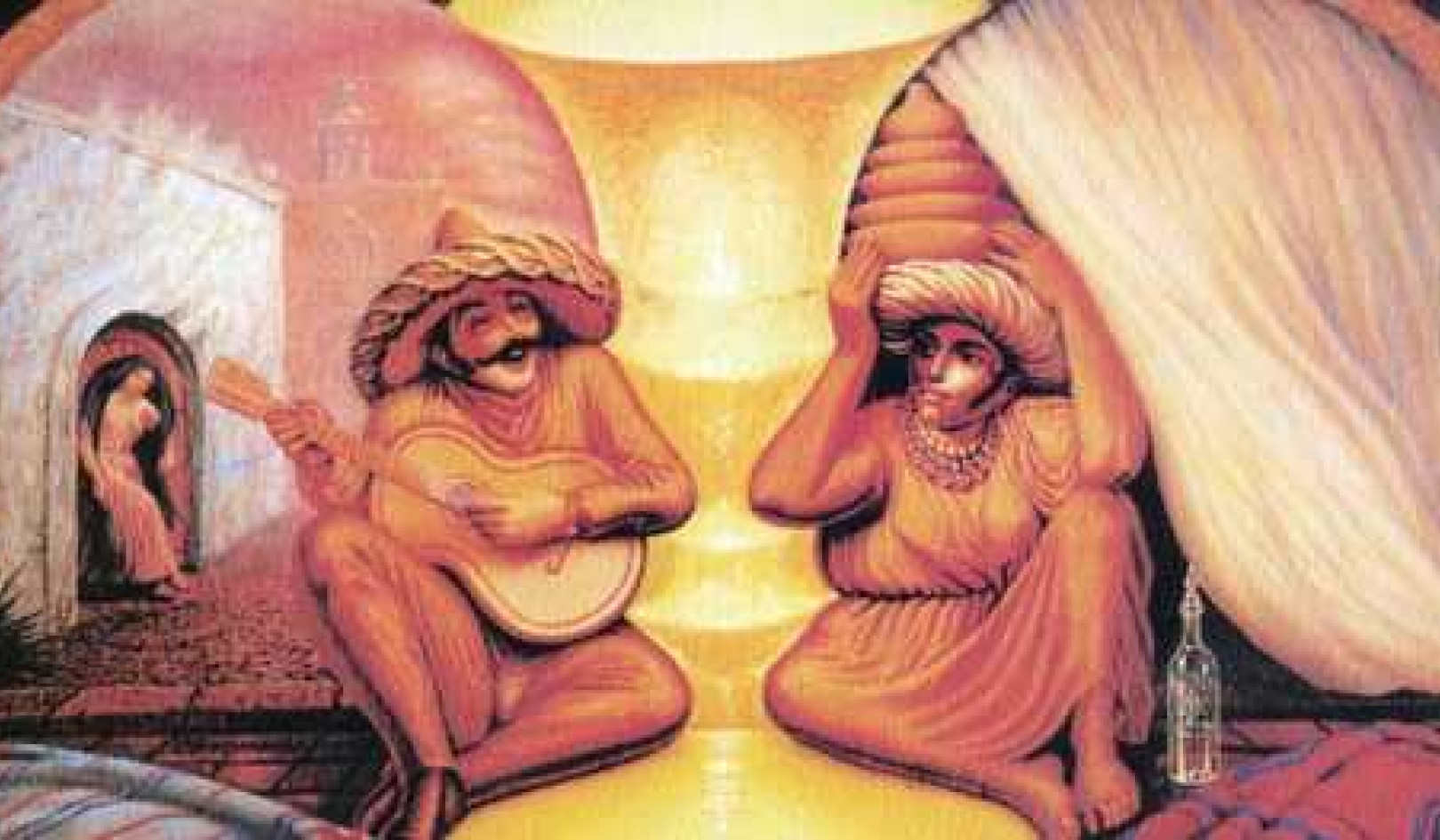
Not infrequently the dreams show that there is a remarkable inner symbolical connection between an undoubted physical illness and a definite psychic problem so that the physical disorder appears as a direct mimetic expression of the psychic situation. — Carl Jung
Dreams have provided useful information in medical diagnosis for centuries, beginning in ancient times with the shamanic traditions of the indigenous cultures around the world. Shamans dream intentionally for ailing tribal members as well as interpret dreams that occur during a healing crisis to provide therapeutic guidance. Often dreams were responsible for instructing the shamans in the specific uses of medicinal plants. In The Way of the Shaman, anthropologist-turned-shaman Michael Harner describes the phenomenon of the “big dream,” which is “repeated several times in the same basic way on different nights, or it is a one-time dream that is so vivid that it is like being awake, an unusually powerful dream.”
Sacred Dreams
In Native American tradition, vision quests involve four days and four nights of seclusion in nature seeking spiritual communication for guidance and insight. The Lakota word for vision quest is Hembleciya, which translates to “Crying for a Dream.” According to the legendary Lakota Holy Man Frank Fools Crow: “My ancestors were all taught how to have sacred dreams. In these dreams, all kinds of strange and beautiful things would happen, things that never could take place in ordinary life. Strange beings would appear, and every kind of creature would come in impressive forms. These visitors would speak to the people and give them messages.”
In ancient Greece, dreams were used in the Ascelpian temples for guidance on health-related matters, but this fact has been largely forgotten in modern medicine. There is great irony in this statement, as these temples were dedicated to Asclepius, the Greek god of medicine, whose rod with the single entwined snake is to this day the symbol of medicine. Pilgrims would incubate dreams overnight in the temples and report them to a priest the next day, with the expectation of receiving an appropriate prescription for a cure. Particularly effective dreams might even provide a spontaneous healing by themselves. Dream incubation is a technique used to plant a dream-seed in the mind, in order for a particular dream topic to occur, either for recreation, love, health, or to attempt to solve a problem.
Centuries later, Sigmund Freud founded the field of psychoanalysis based on his dream work in psychotherapy, which included analysis of his own personal dreams. His most famous dream report, about a patient named Irma in 1895, has been interpreted as being a foreshadowing of his death from mouth cancer diagnosed in 1923: “She then opened her mouth properly and on the right hand I found a big white patch; at another place I saw extensive whitish gray scabs upon some remarkable curly structures which were evidently modeled on the turbinal bones of the nose. I at once called in Dr. M., and he repeated the examination and confirmed it.”
Carl Jung, the founder of analytical psychology, stated, “I take dreams as diagnostically valuable facts,” including their use in diagnosing medical conditions. In discussing “big dreams,” he noted: “Looked at more closely, ‘little’ dreams are the nightly fragments of fantasy coming from the subjective and personal sphere, and their meaning is limited to the affairs of every day. That is why such dreams are quickly forgotten, just because their validity is restricted to the day-to-day fluctuations of the psychic balance. Significant dreams, on the other hand, are often remembered for a lifetime, and not infrequently prove to be the richest jewel in the treasure-house of psychic experience.”
While these two pioneering psychiatrists were bringing dreams back into the realm of modern medicine, Edgar Cayce, The Sleeping Prophet of Virginia Beach, gave over 14,000 psychic readings in the first half of the 20th century, some of which included dream interpretation. Jerry Lazarus, an authority on Cayce’s approach to dreams, notes one reading specified that “Any condition becoming reality is first dreamed.” Another reading stated: “And too oft, ye disregard them; or too seldom do ye pay any attention to them! They are parts of thy experience. How often have you visioned in symbol or in dream those very things that happened to thee later!”
Big Dreams and Physical Illness
Russian psychiatrist Vasily Kasatkin published the first research correlating dreams with physical illness in his book The Theory of Dreams in 1967. An English report about this work was provided by Van de Castle. Kasatkin based his observations on 10,240 dreams from 1,200 dreamers, most of whom had neuropsychiatric disease, including 44 cases of brain tumors and six cases of spinal cord tumors, as detailed in a translation by Susanne van Doorn. He noted the following common dream features related to the presence of physical illness:
1) an increase in dream recall;
2) distressful, violent, and frightening images;
3) occurrence preceding the first symptoms;
4) long duration and persistence;
5) content revealing the location and seriousness of the illness.
English psychiatrist Robin Royston collected over 400 health-related dreams, including the case of a man who dreamed of a Black Panther digging its claws into his back at the exact site where his wife later discovered a mole that was diagnosed as melanoma. His story of “Bad Nancy” describes a dream play on words reported by a woman named Nancy who self-diagnosed her own breast “malignancy” in a dream of her pounding on her chest and shouting that accusatory name. This dream and four others of women who dreamed about their breast cancers before diagnosis were described in detail in Healing Dreams by Marc Ian Barasch, including this observation by Royston: “These are not ordinary dreams, but big dreams, archetypal dreams, so laden with powerful emotional affect that the dreamer is forced to take them seriously.”
Barasch was motivated to research healing dreams by his own personal experience of dreaming his thyroid cancer diagnosis. Over a period of weeks, he experienced a series of ominous dreams focused on his neck culminating in one where “torturers had hung an iron pot filled with red-hot coals” under his chin. He was compelled to visit a physician who could find nothing wrong. The flood of nightmares continued until upon re-examination the doctor found a thyroid nodule. Biopsy showed a malignancy that was subsequently cured by successful surgery.
Multidimensional Model For Dream Interpretation
In the introduction to his book, Barasch outlines a multidimensional model for dream interpretation, which I have incorporated into my own approach. My guide to working with a dream diary by writing down a question before going to bed is summarized below and described in more detail with an illustrative dream example in the appendix of my book Let Magic Happen: Adventures in Healing with a Holistic Radiologist.
1. Circle any words that seem to be unusual or out of place, and look them up in a dictionary to check for wordplay or unexpected puns related to your question.
2. Consider the dream from the personal, shadow, warning, sexual, social, archetypal, synchronistic, and precognitive perspectives.
3. Check for any recurrent theme from past dreams, and pay attention to any animals that visited you in the dream world.
4. Finally, ask yourself, What does the dream want? Give serious consideration to the possibility that the spirit world may have a question it wants you to answer in return.
5. Sharing the dream with someone who can provide candid feedback may provide a fresh perspective and additional insight.
©2018 by Larry Burk and Kathleen O’Keefe-Kanavos.
Publisher: Findhorn Press, an imprint of Inner Traditions Intl.
All Rights Reserved. www.innertraditions.com
Article Source
Dreams That Can Save Your Life: Early Warning Signs of Cancer and Other Diseases
by Larry Burk, M.D., C.E.H.P., and Kathleen O’Keefe-Kanavos.
 Showcasing the important role of dreams and their power to detect and heal illness, Dr. Larry Burk and Kathleen O’Keefe-Kanavos share amazing research and true stories of physical and emotional healings triggered by dreams. The authors explore medical studies and ongoing research on the diagnostic power of precognitive dreams. Alongside these stories of survival and faith, the authors also include an introduction to dream journaling and interpretation, allowing the reader to develop trust in their dreams as a spiritual source of healing and inner guidance.
Showcasing the important role of dreams and their power to detect and heal illness, Dr. Larry Burk and Kathleen O’Keefe-Kanavos share amazing research and true stories of physical and emotional healings triggered by dreams. The authors explore medical studies and ongoing research on the diagnostic power of precognitive dreams. Alongside these stories of survival and faith, the authors also include an introduction to dream journaling and interpretation, allowing the reader to develop trust in their dreams as a spiritual source of healing and inner guidance.
Click here for more info and/or to order this paperback book or purchase the Kindle edition.
About the Authors
 Larry Burk, M.D., C.E.H.P., President of Healing Imager, PC, specializes in teleradiology, Emotional Freedom Technique (EFT), hypnosis, and dreamwork. He attended medical school and residency training at the University of Pittsburgh and later trained in acupuncture and hypnosis, becoming a Certified Energy Health Practitioner. He is the author of Let Magic Happen: Adventures in Healing with a Holistic Radiologist.
Larry Burk, M.D., C.E.H.P., President of Healing Imager, PC, specializes in teleradiology, Emotional Freedom Technique (EFT), hypnosis, and dreamwork. He attended medical school and residency training at the University of Pittsburgh and later trained in acupuncture and hypnosis, becoming a Certified Energy Health Practitioner. He is the author of Let Magic Happen: Adventures in Healing with a Holistic Radiologist.
 Kathleen O’Keefe-Kanavos has spent years studying and teaching about dreams. A three-time breast cancer survivor whose premonitory dreams diagnosed her cancer, she credits her survival to conventional treatment combined with her dreams as a diagnostic tool. Kathleen is one of 20 case studies from a paper on precognitive dreams that diagnosed breast cancer recently published in a medical journal.
Kathleen O’Keefe-Kanavos has spent years studying and teaching about dreams. A three-time breast cancer survivor whose premonitory dreams diagnosed her cancer, she credits her survival to conventional treatment combined with her dreams as a diagnostic tool. Kathleen is one of 20 case studies from a paper on precognitive dreams that diagnosed breast cancer recently published in a medical journal.
Books by these Authors
at

Thanks for visiting InnerSelf.com, where there are 20,000+ life-altering articles promoting "New Attitudes and New Possibilities." All articles are translated into 30+ languages. Subscribe to InnerSelf Magazine, published weekly, and Marie T Russell's Daily Inspiration. InnerSelf Magazine has been published since 1985.

Thanks for visiting InnerSelf.com, where there are 20,000+ life-altering articles promoting "New Attitudes and New Possibilities." All articles are translated into 30+ languages. Subscribe to InnerSelf Magazine, published weekly, and Marie T Russell's Daily Inspiration. InnerSelf Magazine has been published since 1985.


























